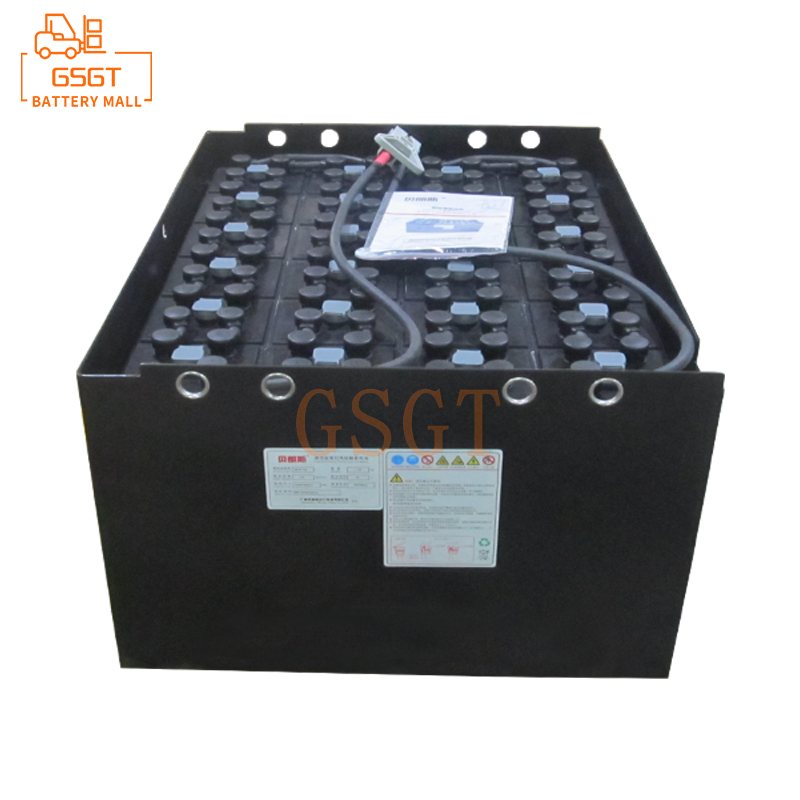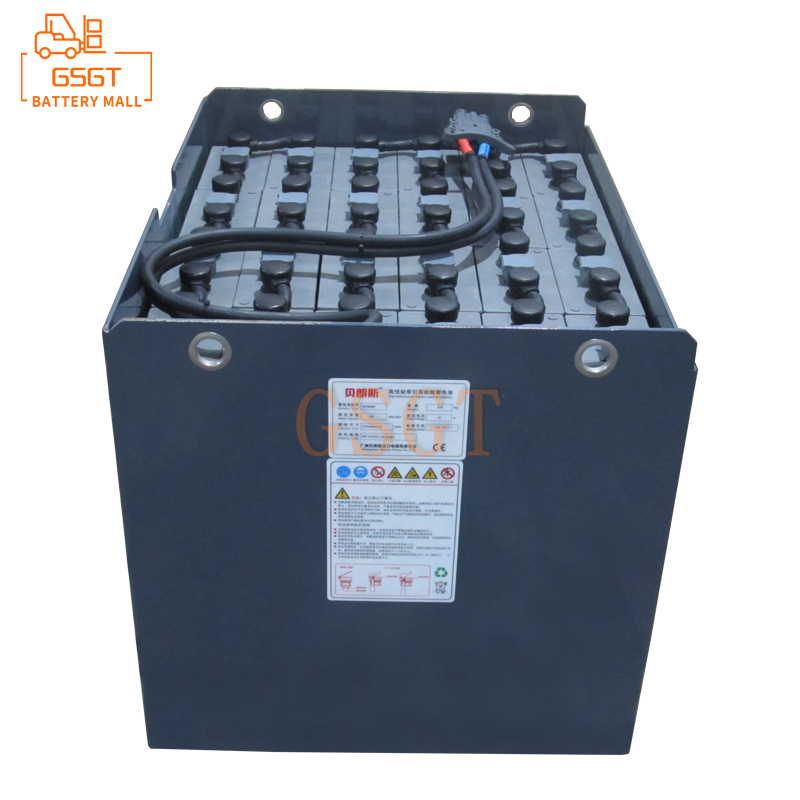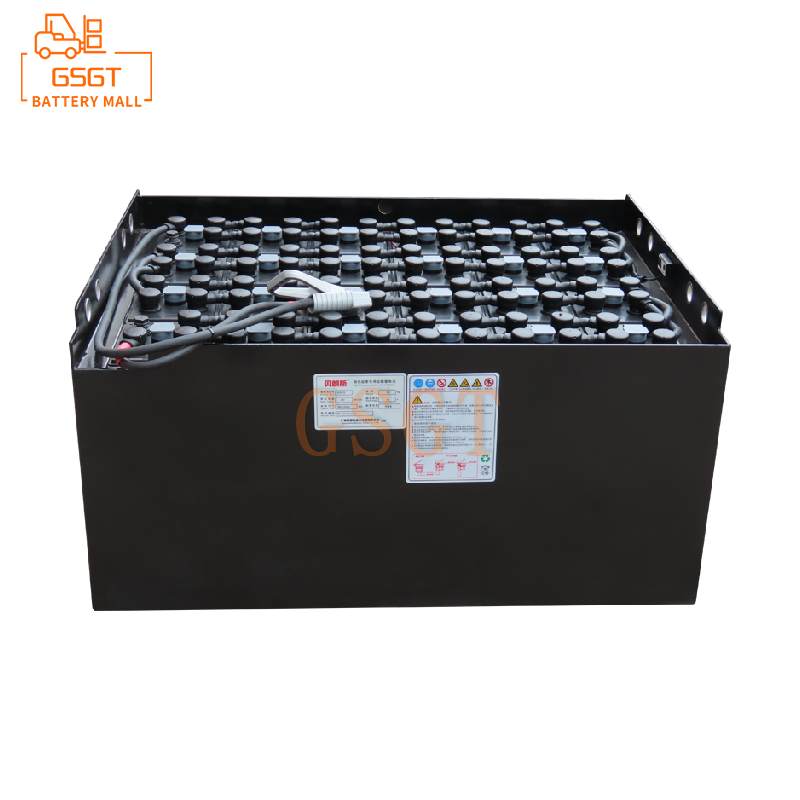Time:2025-07-08 09:33:19
Browse:608
In the field of industrial material handling, forklifts, as key equipment, the selection of their power sources is of vital importance. Lead-acid batteries have occupied an important position in the field of forklift power due to their advantages such as low cost and mature technology. However, different working conditions have different requirements for the performance of forklift lead-acid batteries. How to better adapt lead-acid batteries to various working conditions has become a focus of attention for many enterprises.
The working principle and characteristics of lead-acid batteries
Lead-acid batteries generate electrical energy through the chemical reaction between lead and sulfuric acid. During the discharge process, lead dioxide at the positive electrode reacts with sulfuric acid, and lead at the negative electrode also reacts with sulfuric acid to form lead sulfate and water, thereby releasing electrical energy. A reverse reaction occurs during charging. This type of battery has a relatively low energy density, which means it is heavier under the same amount of electricity. However, it has a relatively low cost, high reliability, and relatively stable performance in low-temperature environments. For instance, in some small warehouses, due to the relatively small volume of goods being moved, the requirements for the range and power of forklifts are relatively low. As a result, the low-cost advantage of lead-acid batteries is highlighted, which can meet the basic daily handling needs.
Demand Analysis of Lead-acid Batteries under Different Working conditions
Light load and short-time operation conditions
In some retail warehouses, forklifts are mainly used for short-distance transportation of small quantities of goods. The operation time is discontinuous and each operation lasts for a relatively short period. Under this working condition, the energy reserve requirement for the battery is not high, but the battery needs to be able to start and stop frequently. Under such working conditions, lead-acid batteries, due to their excellent instantaneous discharge performance, can easily handle the frequent starts of forklifts. Meanwhile, due to the low usage frequency, the maintenance cost of the battery is also relatively controllable.
Heavy load and long-term operation conditions
For places such as logistics and warehousing centers, forklifts need to operate continuously for long periods of time and frequently move heavy objects. At this point, there are relatively high requirements for the battery's capacity and endurance. Although lead-acid batteries have a low energy density, by choosing large-capacity lead-acid battery packs and reasonably arranging charging times, the demands of such working conditions can be met. For instance, when forklifts stop working at night, they should be charged for a long time to ensure high-intensity operations during the day.
Special environmental conditions
In some humid or temperature-fluctuating environments, such as cold chain warehouses or outdoor construction sites, batteries need to have good adaptability. Lead-acid batteries have relatively stable performance in low-temperature environments. As long as proper insulation measures are taken for the batteries, they can operate normally. For damp environments, choosing lead-acid batteries with better sealing performance can effectively prevent internal short circuits in the battery and extend its service life.
Lead-acid battery solutions suitable for multiple working conditions
Battery selection optimization
According to the requirements of different working conditions, precisely select the appropriate capacity and type of lead-acid batteries. For light-load conditions, flat lead-acid batteries can be selected. They have a lower cost and can meet the requirements. For heavy-duty working conditions, tubular flat lead-acid batteries should be chosen. These batteries have a slightly higher capacity and can provide more lasting power. For instance, in the parts handling workshop of an automotive manufacturing plant, due to the relatively heavy weight of the parts being moved, forklifts equipped with tubular flat lead-acid batteries are selected. This enables the efficient completion of the handling tasks and also ensures the battery life.
Improvement of the charging system
Intelligent charging equipment is adopted to adjust the charging parameters according to the actual state of the battery. For instance, when the battery power is low, a large current is used for fast charging. When the power is close to full charge, the current is automatically reduced to prevent overcharging. For multi-shift operation conditions, multiple chargers can be equipped to achieve rapid battery charging in rotation and reduce waiting time. At the same time, wireless charging technology can also be introduced. Wireless charging devices can be set up in the areas where forklifts are parked. Forklifts can charge during short breaks, thereby improving the efficiency of battery usage.
Formulation of maintenance and care strategies
Develop personalized maintenance and servicing plans for different working conditions. Under light-load conditions, the maintenance cycle of the battery can be appropriately extended, but it is still necessary to regularly check the electrolyte level and specific gravity to ensure the normal operation of the battery. For heavy-load conditions, increase the inspection frequency, replenish the electrolyte in a timely manner, clean the dust and dirt on the battery surface, and prevent short circuits. Under special environmental conditions, such as in a humid environment, strengthen the inspection of battery sealing performance. In high-temperature environments, pay attention to the heat dissipation of the battery to avoid overheating and affecting its lifespan.
Frequently Asked Questions
Question: The performance of lead-acid batteries will be affected in low-temperature environments. How to solve this problem?
Answer: In low-temperature environments, the fluidity of the electrolyte in lead-acid batteries deteriorates, the internal resistance increases, and the battery capacity decreases. Heat loss can be reduced by installing an insulation cover on the battery. Lead-acid batteries with better low-temperature performance can also be chosen. These batteries are designed to have better adaptability to low-temperature environments. At the same time, in a low-temperature environment, appropriately increasing the charging voltage can help the battery charge better and improve its performance.
Question: In multi-shift operations, lead-acid batteries take a long time to charge. How can efficiency be improved?
Answer: On the one hand, fast charging technology can be adopted to shorten the charging time by increasing the charging current, but it is necessary to pay attention to controlling the charging temperature to prevent the battery from overheating. On the other hand, it is necessary to equip a backup battery pack. When one battery pack runs out of power, the backup battery should be replaced in time and the depleted battery should be charged. This can ensure the continuous operation of the forklift. In addition, optimizing the charging process and rationally arranging the charging time, such as quickly recharging during the intervals of forklift operations, can also enhance the overall operational efficiency.
Question: The lifespan of lead-acid batteries is limited. How can their service life be extended?
Answer: Correct usage and maintenance are the keys to extending the lifespan of lead-acid batteries. First of all, it is necessary to avoid overcharging and overdischarging. Use a smart charger to prevent the battery from overcharging. During the operation of forklifts, charge them in time when the battery level drops below a certain level to avoid over-discharge. Secondly, regularly check the electrolyte level and specific gravity, and replenish distilled water or dedicated electrolyte in a timely manner. In addition, keep the battery surface clean to avoid short circuits. When the forklift is not in use, regular charging and discharging maintenance of the battery should be carried out to prevent sulfation of the battery plates, thereby effectively extending the service life of lead-acid batteries.
Through reasonable battery selection, improvement of charging systems and formulation of maintenance strategies, forklift lead-acid batteries can better adapt to various working conditions, providing reliable power support for the material handling operations of enterprises, while reducing operating costs and improving work efficiency.

$5140

$3130

$3920

$3060

MESSAGE
Professional And Efficient
Security
Affordable Price
Professional Services